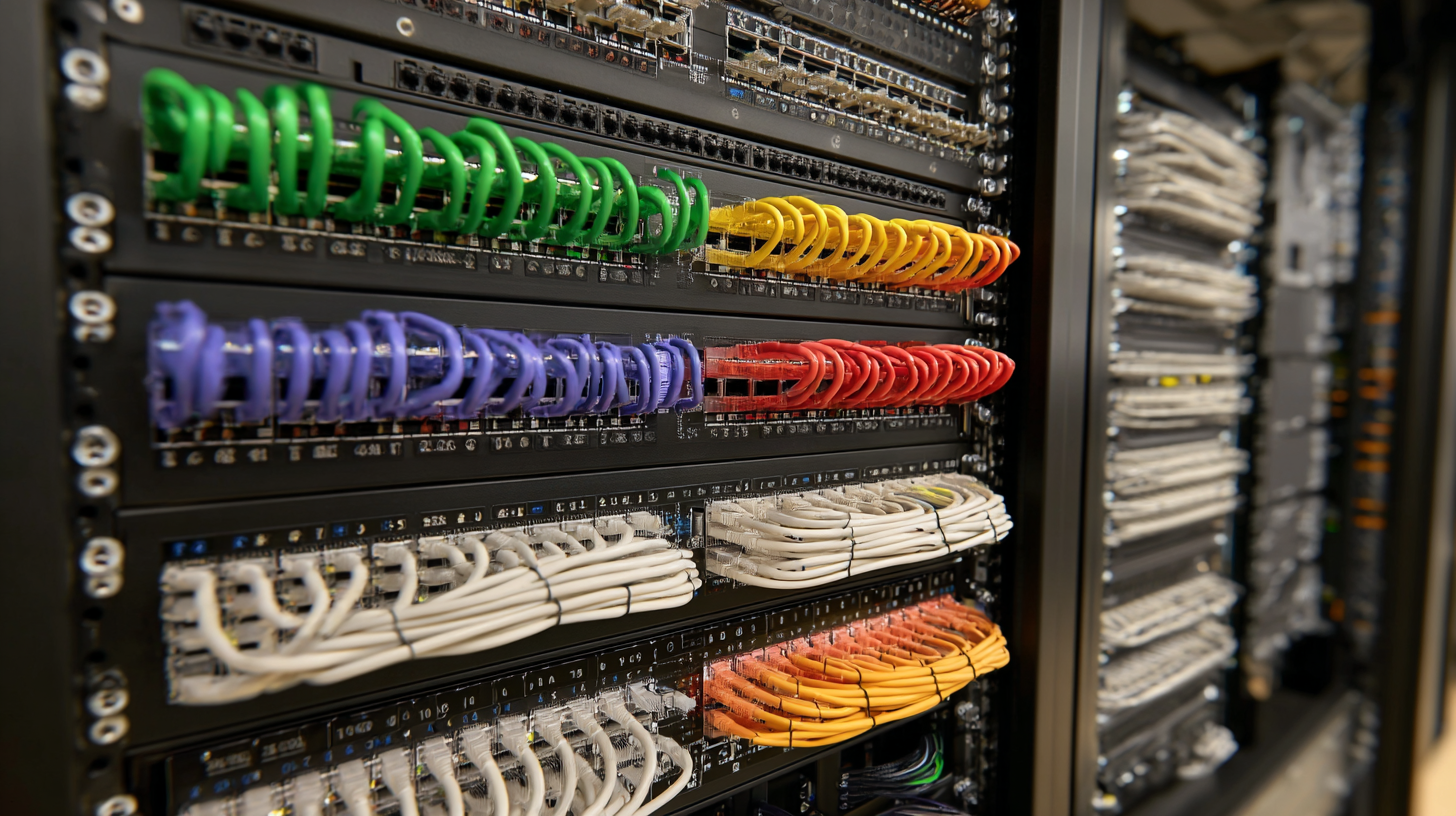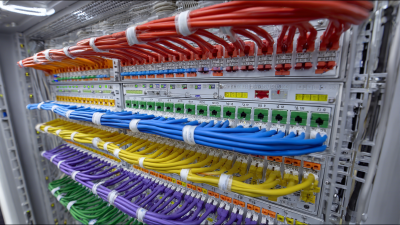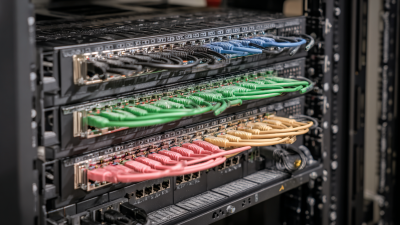Understanding Patch Panels: The Backbone of Efficient Network Management
In the rapidly evolving world of network management, patch panels are often regarded as the unsung heroes that streamline operations and enhance connectivity. As technology continues to advance, the importance of efficient network infrastructure becomes increasingly crucial. Renowned networking expert, John Smith, emphasizes, "A well-organized patch panel not only improves the aesthetics of a network setup but significantly boosts efficiency and troubleshooting." His insights reflect a growing recognition of how patch panels serve as the backbone of modern connectivity.

Patch panels facilitate the management of numerous cables in a controlled manner, allowing network administrators to maintain organization amidst complexity. The layout of a network can greatly influence its performance, and having a well-structured patch panel is essential for minimizing downtime and ensuring seamless communication between devices. As organizations expand their digital footprint, understanding the role of patch panels becomes pivotal.
In conclusion, the integration of patch panels into network systems cannot be overstated. They are critical for efficient management, providing both structure and accessibility. As we delve deeper into the functionalities and benefits of patch panels, we uncover how they contribute to the overall robustness of network infrastructures in today’s technology-driven landscape.
The Role of Patch Panels in Network Infrastructure Efficiency
Patch panels play a crucial role in enhancing the efficiency of network infrastructure, serving as the central point for connecting and managing multiple network cables. The global patch panels market is expected to experience significant growth, with projections indicating an increase from $1.28 billion in 2024 to $2.78 billion by 2032, at a compound annual growth rate (CAGR) of 10.44%. This expanding market highlights the growing recognition of the importance of well-organized cabling systems in improving network performance and reliability.
The integration of advanced technologies, such as automated fibre patch panels, is further revolutionizing network management. For instance, innovations in optical circuit switches enable operators to automate network testing and enhance connectivity using AI/ML techniques. The rapid growth in demand for such automated data center infrastructure is indicative of a broader trend towards optimizing network efficiency. As organizations continue to upgrade their facilities with integrated solutions that encompass lighting, power, HVAC, and networking systems, the role of patch panels becomes increasingly vital in ensuring a streamlined and effective network operation.
Types of Patch Panels and Their Unique Advantages
 When it comes to efficient network management, understanding the various types of patch panels and their unique advantages is crucial. There are several common types: standard patch panels, fiber optic patch panels, and even intelligent patch panels. Each type serves a specific purpose and can dramatically enhance network performance. According to a recent report by MarketsandMarkets, the global patch panel market is projected to grow from $3.9 billion in 2021 to $6.3 billion by 2026, demonstrating the increasing reliance on these devices in modern network infrastructures.
When it comes to efficient network management, understanding the various types of patch panels and their unique advantages is crucial. There are several common types: standard patch panels, fiber optic patch panels, and even intelligent patch panels. Each type serves a specific purpose and can dramatically enhance network performance. According to a recent report by MarketsandMarkets, the global patch panel market is projected to grow from $3.9 billion in 2021 to $6.3 billion by 2026, demonstrating the increasing reliance on these devices in modern network infrastructures.
Standard patch panels are typically designed for copper cabling and are prevalent in many organizations due to their cost-effectiveness and simplicity. They allow for easy management and organization of network cables, reducing clutter and ensuring quick troubleshooting. On the other hand, fiber optic patch panels offer the advantage of higher bandwidth and longer transmission distances, making them ideal for data centers and high-speed networks. A study conducted by ResearchAndMarkets highlighted that the demand for fiber optic products is expected to rise significantly, driven by the need for faster internet speeds and increased data traffic. Intelligent patch panels take this a step further by providing real-time monitoring and diagnostics, thus minimizing downtime and enhancing overall network efficiency.
Key Benefits of Using Patch Panels for Network Management
Patch panels play a pivotal role in network management, offering a structured and efficient way to organize and connect network cables. One of the key benefits of using patch panels is the enhanced troubleshooting capability they provide. According to a report from IDC, nearly 70% of downtime incidents in enterprise networks can be traced back to poor cable management. By utilizing patch panels, IT professionals can easily identify and rectify connectivity issues, minimizing the prolonged service interruptions that can affect business operations.
Moreover, patch panels contribute significantly to scalability and flexibility. As networks grow, organizations often need to adjust their configurations to accommodate new devices or services. The Nemertes Research Group estimates that businesses with structured cabling systems, including patch panels, can achieve network configuration changes up to 50% faster than those without. This adaptability is crucial in today’s fast-paced digital landscape, allowing businesses to remain competitive while efficiently managing their network infrastructure.
Understanding Patch Panels: Key Benefits of Using Patch Panels for Network Management
Best Practices for Installing and Maintaining Patch Panels
When installing patch panels, it is crucial to follow best practices to ensure optimal performance and maintainability. First, proper labeling of cables and ports is essential. Each cable should be clearly marked at both ends to facilitate troubleshooting and reduce downtime when issues arise. Additionally, using consistent color codes can aid in quick identification, enhancing overall network management efficiency.

Another critical consideration is proper cable management. Keeping cables organized and neatly arranged within the patch panel helps prevent tangles and minimizes the risk of damage. Utilizing cable ties, Velcro straps, or cable management bars can enhance airflow and reduce electromagnetic interference. Furthermore, ensuring that cables are not excessively bent or twisted will help maintain signal integrity and prolong the lifespan of the cabling infrastructure.
Regular maintenance is also vital for the longevity of patch panels. Conduct periodic inspections to check for loose connections, signs of wear, or any physical damage. Cleaning dust and debris from the panels can prevent overheating and connectivity issues. By adhering to these best practices, network administrators can maintain an efficient and reliable networking environment.
Common Mistakes to Avoid When Using Patch Panels in Networking
When utilizing patch panels in networking, avoiding common mistakes is crucial for maintaining an efficient and organized system. One prevalent error is overlooking proper labeling. Failing to label each port can lead to confusion during maintenance or troubleshooting, resulting in extended downtime. Clear labeling not only enhances efficiency but also aids future expansions or modifications.
Another mistake is improper cable management. Cables that are tangled or excessively stretched can create signal interference and increase wear over time. Implementing a structured approach to cable organization, such as using zip ties, cable trays, or color-coded cables, can significantly improve airflow and accessibility. Additionally, neglecting regular maintenance checks can lead to undetected issues that compromise network performance. Regularly inspecting the patch panels and cables ensures that any potential problems are addressed promptly, helping maintain optimal network health.
Related Posts
-

7 Best Practices for Selecting the Right Patch Panel for Your Network
-

How to Choose the Right Network Patch Panel for Your Installation Needs
-

How to Choose the Right Patch Panel for Your Networking Needs
-

How to Choose the Right Patch Panel for Your Networking Needs
-

Unlocking High Performance Networking with Advanced Cat 6A Patch Panels for Future Proof Systems
-

Ultimate Guide to Choosing the Right Network Patch Cable for Your Home Setup
